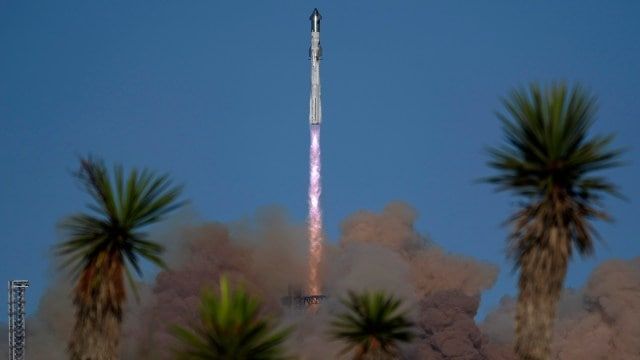SpaceX Misses Booster Catch in Record-Breaking Test Flight

Boca Chica, Texas - SpaceX successfully launched its latest Starship rocket from Texas, but failed to catch the booster's landing with its massive mechanical arms, instead directing it to a splashdown in the Gulf of Mexico.
The test flight, which lasted for an hour and took place on Tuesday, marked the sixth successful launch of the world's largest and most powerful reusable rocket. The spacecraft separated from the booster roughly four minutes into the flight and soared across the Gulf of Mexico on a near-loop around the world, demonstrating its capabilities to carry payloads over long distances.
However, despite achieving several milestones during the flight, SpaceX was unable to catch the booster with its robotic legs at the designated splashdown site in the Gulf. The decision to abandon the attempt was made by flight director Dan Huot, who did not specify what went wrong but stated that not all of the required criteria for a successful landing were met.
The empty Starship spacecraft successfully completed its planned course and splashed down upright into the Indian Ocean, marking a significant achievement in the ongoing development of the reusable rocket. The Starship's engines were ignited in space during the flight, simulating the necessary propulsion sequence that will be used when returning from orbit.
Several new experiments were conducted on board the spacecraft, including thermal protection system tests and evaluations of catch mechanisms for future flights. These upgrades aim to enhance the capabilities of the Starship and enable more efficient recycling of its reusable components.
SpaceX's CEO Elon Musk, who was joined by President-elect Donald Trump at the launch site, plans to reuse the entire 400-foot-long Starship on multiple occasions, aiming to significantly reduce the cost of accessing space. The company is currently working with NASA on a $4 billion contract to return astronauts to the moon using the Starship, with SpaceX also planning to establish a permanent human settlement on Mars.
This test flight brings SpaceX closer to achieving its ambitious goals for reusable space travel and marks an important step forward in the development of this critical technology.
